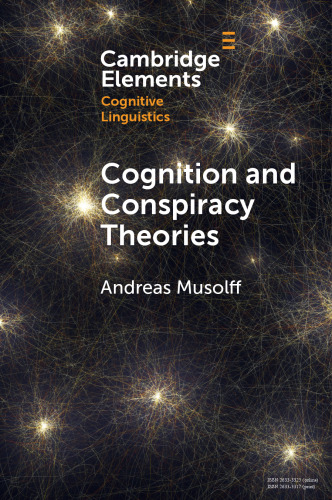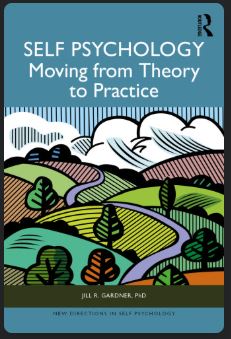This Page Intentionally Left Blank CHAPTER I Hypothesis: There Is Hope C.R. Snyder It U tht naturt of an hypothtsis, when once a man has contrivtd ii, that it assimilates thing to itself, a.s proper nourishment; and.from the.first mommt of your fling it, it gain-ally grows .1/ronger by &ay thing you su, hear, rear, or understand. -Laurence Sterne, Tristram SJ1andy (1759) FROM THE TALE OF PANDORA TO THE 20TH CENTURY If you were to ask people today whether hope is good or bad, most probably would s.ay that it is good. There are, of course, others historically who have held similar positive views about hope.Writers within the Judeo-Christian tradition, for exam- ple, have placed hope as one of the triumvirate of virtues along with faith and char- ity (sec Muyskens, 1979). Saint Paul and Martin Luther held hope, along with love, as the essence of what is good in life. Although other favorable views of hope could be presented, history has been rather negative about it. Turning to the dark side of hope, let us start with the oldest and most well- known story of hope-the tale of Pandora. The mortal Prometheus had stolen fire &om the gods,angering Zeus.Pondering how to extract revenge, the godslaunched a plan basedon reverse psychology. Here is how it played out.Fashioning the maiden Pandora, they sent her earthward with a dowry j(Jr.{That is right, a jar. Evidently, the Greek word for jar (which was seen as a storehouse of consciousness) was mis- understood in the translation of the myth in late Roman times (Hesiod, 1993).) Back to the story, Pandora was given strict instructions never to open this jar upon arriving at earth. Pandora could not resist the temptation and disobeyed immedi- ately as the gods knew she would. As she lifted the lid, out spewed a plague to damn humans forever. For the body, there were gout, rheumatism, and colic; for the mind there were spite, envy, and revenge. Horrified at this unleashing of evil, Pandora hurried to close the lid. She did not notice hope stuck under the lip of the jar. lntcr- H4ndboolt of Hopt Cnovri'"110 2000 bv Academic Pnm. All rieht1 of n:1)1'Clffi,ctinn in rnr form C.R.Snyder estingly, mythology isvague on whether hope actually escaped (Smith, 1983). If one were to use the typical historical view of hope, however, it must have escaped given the great majority of writers who describe it as an evil force (similar to the others escaping from Pandora's jar). Sophocles portrayed hope asa human foible that only served to stretch out suffer- ing (centuries later, Nietzche uttered a virtually identical damnation of hope). Plato chastised those who listen to the voice of hope, callingit a"'foolish counselor." Euri- pedes labeled it as a "curse upon humanity." Francis Bacon, in a culinary analogy, said, "Hope is a good breakfast, but a bad supper.'' Similarly, Benjamin Franklin warned, "He that lives upon hope will die fasting." This common view held chat hope was all illusion, lacking substance. It seduced humankind with a false promise. Perhaps the most succinct summary of the cynicism about hope was rendered by Shakespeare in TT,e Rape of Lucre<e, as he wrote, "And so by hoping more they have but Jesse." HOPE TOWARD THE 21ST CENTURY Tillich (1965) more recently tried to reconcile the opposed views of hope by rea- soning that:"Hope is easy for the foolish, but hard for the wise. Everybody can lose himself into foolish hope, but genuine hope is something rare and great" (p. 17). Surely, foolish hope is bad, isn't it? Even this seeming verity is questionable when considering the fact that even "foolish" hope may yield positive outcomes. For example, the healings of revivalist preachers and snake oilsalesmen surely would fall under "false hope," but they have had occasional documented successes (Frank, 1973). Yet the uncertainty regarding the source of the hope effects, even the occa- sional positive ones, has led many members of the medical community to view all nonphysical cures-such as hope-as quackery. In this view, "hope"cures are cate- gorized as placebo-like, with the implication that they are ingenuine and not legiti- mate forms of treatment. A small group of physicians (e.g., Frank, 1968, 1973, 1975; Locke & Colligan, 1986; Menninger, 1959; Pelletier, 1977; Siegel, 1986;Simonton, Matthew-Simonton,& Creighton, 1978), however, took the radical view that posi- tive emotions, including hope, are part of all forms of healing.This view clearly still is held by the minority in medicine, nonetheless. During the late 1950s to the 1960s, hope was examined under the guiseof more formal, scientific approaches. Both psychiatrists (e.g., Frank, 1968; Frankl, 1963; Melges & Bowlby, 1969; Menninger 1959;Schachtel, 1959) and psychologists (e.g., Cantril, 1964: Farber, 1968; Mowrer, 1960; Stotland, 1969) agreed on the premise that hope was based on positive expectations forgoal attainment. Although promising, their work did not capture the support of the wider scientific community who remained skeptical about hope (Frank, 1968). From the mid-1970s onward, there was a surge of psychological research and writings related to stress, coping, and illness. Research began to suggest that nega- I Hypothesis: There is Hope tive thoughts and feelings were related to poorer health, coping, and medical recov- ery (see Cohen, 1979:Cohen & Lazarus, 1979, for reviews). Some writers (Cousins, 1976; Frank, 1975; Simonton et al., 1978) argued that given the involvement of negative thoughts and emotions in poor health, then positive processes such as hope would be worthy of study for possible positive sequelae. Indeed, the evidence was accumulating in support of the roles of enhanced positive self-evaluations and per- ceptions of control or mastery in psychological and physical well-being (Taylor, 1989; Taylor & Brown, 1988, 1994). lt was during this period that health psychol- ogy as a discipline alsobegan to flourish, further promoting a zeitgeist that was more supportive of hope and similar constructs. As such, the 1970s and 1980s marked a period when many investigators, from a variety of disciplines (nursing to psychol- ogy), developed theories about hope (see Farran, Herth, & Popovich, 1995, for review). As is often the case in a new area, it did not appear that these hope writ- ers were aware of each other's work; there was little cross-referencing, no one approach seemed to gain favor, and none of the individual theories were researched consistently overa period of severaJ years (for more on the history of hope, see Sny- der, 1994b). For these reasons, the present handbook has been woven around the hope theory that has received the most anention in the 1990s. HOPE THEORY In this section, I will review the events that prompted me to formulate hope the- ory. In the history of the evolution of the concept, although I served as a conduit, I want to acknowledge that the theory simply could not have happened without the input of countless dedicated and inventive people who have been part of the hope research group. Included here are undergraduate students who heard about the work and volunteered to help in various aspects of the experiments; there were severaJ undergraduate psychology honors students who performed key experi- ments; there has been a small army of graduate students in the clinical, counseling, and sports psychology graduate programs who did their masters and dissertations on hope; there were postdoctoral students as well as visiting scholars who partici- pated; and there were colleagues in the Psychology Department and other depart- ments at the University of Kansas who contributed their insights and efforts. What follows is my rendering of some of the key forces that helped to shape the devel- opment of hope theory. The Other Side of Excusing: A Message from Research Participants The research participants literally led me to hope. Here is that story, in brief. For severa1 years in the late 1970s and the early 1980s, I was doing research on how peo- C.R.Snyder pie give excuses when they make a mistake or perform poorly. Study after study showed the pervasiveness of this human motive, and, as is my habit, I sometimes would run the research participants in various experiments and talk with them after- ward. Yes, they ad.mined using excuses to distance themselves from the bad events that we had contrived in the laboratory, but several people suggested that we were not allowing them to exhibit an even bigger motive on their part-trying to go after positive goals. This intrigued me. Here I consistently heard my research par- ticipants tell me that, in our excuse research, we were studying only part of the dis- tancing process, i.e., how people want to increase the distance between themselves and their bad outcomes. Indeed, such increased distancing captured the essence of the excusing motive ... but, the research participants were saying that they also were motivated to decrease the distance to their positive life goals. I tried to make sense of what they were suggesting,_especially after this feedback happened over several excuse studies.There is a lesson for psychological theory and research in this tale- listen to yo14r research participants. (In my earliest published paper on hope that came out in 1989 [Snyder, 1989), but was written almost three years earlier, it is interest- ing to note that I cast hoping as being the "other side" of the "excusing" process.) Some Good Advice from TwoFamous Kansans The other side of excusing ... What could that be? What would be a good term for describing the motive to attach oneself to positive outcomes or goals? For lack of a better term, from the very first, I called it hope. As to my own initial motiva- tion to continue the study of hope, I give the credit to rwo other Kansans whom I had the great pleasure of knowing. One was a colleague in the Psychology Depart- ment, who also was my neighbor just two blocks down from my home on Indiana Street. That friend was Fritz Heider, whose instincts about psychological motiva- tion issues I honored. One day as he was walking by my house, as he typically did, l joined him-anxious to get his "take" on what my research participants were telling me. After I told him what the research participants were saying, along with my thought to call this process "hope," he said nothing for about five minutes. Finally. he spoke-the trail of this "new"motive, said he, was worth following. But, he suggested that I talk with several people and see how they construed their goal thoughts. I heeded this advice, but not before getting the reactions of another person whom I respected.To do this. I journeyed to Topeka, Kansas, to visit with Karl Men- ninger, a retired and extraordinary psychiatrist at the Menninger Foundation. He too encouraged me to pursue the topic of hope and gave me, as a reminder, an autographed copy of his 1959 presidential address-"The Academic Lecture on Hope"-to the American Psychiatric Association. There is a lesson for psycholog- ical theory and research in these lacter two tales-listen to your respected coffeag11es. 1 Hypothesis: There is Hope Thought Samples: "What's on Your Mind?» Encouraged by the support of these two remarkable scholars, I began to form the basis of hope theory. With the freedom of a sabbatical in 1987, I first wanted to check out what others had said about hope, so I went to the library. (This embar- rassing story is told in full in the preface of my 1994 TI1e Psychology of Hope book.) Walking into Watson Library, there seemed to have been some rearranging of references and books, so I headed for the information desk in the front lobby for some advice. Now, I never have been that comfortable in libraries-they remind me of funeral homes with many shelves of books. Somewhat flustered, I asked the young clerk, "Where can I find something on hope?" Apparently on the verge of exploding with laughter, she turned around to compose herself. When she turned back, she was shaking her head in disbelief. In a remarkably loud and clear voice that seemed to echo through the canyons of the library, she asked, "What kind of hope are you looking for?'. Taken aback and not wanting to appear even more stupid, l told her in a soft voice (following the rule that you are never to speak above a whisper in libraries, rather like funeraJ homes) that I thought I knew where to find the material after all. "Can't hear you," she bellowed, filling the Library again with her voice. So, r leaned over the counter and informed her that I thought I could find it on my own. Looking around as if I really did know where to go, I saw the exit sign, and that seemed to be exactly where I wanted to go. Unfortunately, the alarm system went off as I passed through the electronic sensors. Eyes turned to sec who this criminal could be. The young woman at the front desk beckoned to me ,vith a waving finger and reinforced it by hollering, "OVER HERE!" I walked slowly, thinking she would calm down, for she now was not just the desk clerk, but the judge who would find me innocent or guilty. "Sir, could I sec the contents of your briefcase?" A5 she opened it, I had the whimsical thought that she might be part of some new major at the University in "Airport Security and Surveillance." Preoccupied with that thought, I was startled to hear her voice,"It looks clean."She told me to try the exit again, and I was happy to oblige. Of course, the alarm did nor go off this time.. Although I did venture back into the library much later, I recalled the advice of Fritz Heider to talk to people about their goal thinking. I had done this some in the previous years, but I decided to talk with a few more people. In various settings where I struck up conversations with people, I would ask them to describe their thoughts. After explaining that I was a psychologist studying the way people think, people seemed delighted to help. My question was simple, "Would you please tell me about the thoughts you are having today?" I then would take notes, trying to capture the essence of what they had to say. Similar to my earlier research partici- pants who had suggested that they spent much of their time thinking about how to C.R.Snyder reach their desired goals, people described themselves as pursuing some sort of goal. This goal thinking was apparent as they talked about their thoughts. With this teleological premise, I then tried to sort out what type of thoughts seemed to go along with the person's goals. Clearly, part of goal thinking had to do with the protagonist's thoughts about whether workable routes to the desired goals could be achieved.This I called pathways thinking. Additionally, people were think- ing about their willingne to use the pathways to desired goals. This motivational or energy component r called agency. And, as people described their thoughts about pursuing their cherished goals, it seemed to me that they were constantly juggling the pathways and agency thoughts off of each other.That is to say. the routing goal- directed thoughts typically iterated with their agentic motivational analysis; the pathways and agcntic thoughts worked together to yield continued goal directed thinking, or hope. Because of the consistency of these "components" of goal-directed thought aero people, I ceased to sample others and I engaged in careful analyses of my own thinking over several days. Although I may well have been shaped by my insights from observing the thinking patterns of others, I nevertheless found that my own thoughts were most assuredly teleological and that the pathways and agency thoughts seemed to be "attached" to those goal thoughts. I soon realized that I had a core definition of hope, and that definition conformed to ideas I had been form- ing for the previous two years. Hope is the sum of perceived capabilities to 1,rodtUe routes to desired goofs, alot1g with the perceived motivation to use those routes. Since the earliest crystallization of this definition, this basic guiding notion of hopeful thinking has remained. What was intriguing to me was that this new definition of hope was very con- sistent with the earlier 1950s to the 1960s views about hope as being based on pos- itive expectations for goal attainment. The positive expectations were divided into the mutually contributing pathways and agency components. In this process, I had inductively articulated a version of an expectancy-value theory of human motiva- tion that bears similarities and differences to other theories. I will return to this issue of comparing hope theory with other related theories later in this chapter, but it is first necessary to describe hope theory in more detai
چکیده فارسی
این صفحه عمداً خالی گذاشته شده است. و از اولین مادری که آن را پرت میکنید، با چیزی که میشنوید، میشنوید، پشت سر میگذارید یا میفهمید، 1/1/بلندتر میشود. لارنس استرن، تریسترام اس جی 1اندی (1759) از داستان پاندورا تا قرن بیستم اگر امروز از مردم بپرسید که امید خوب است یا بد، به احتمال زیاد می گویید که خوب است. البته، افراد دیگری نیز از لحاظ تاریخی، دیدگاههای مثبت مشابهی در مورد امید داشتهاند. برای مثال، نویسندگان سنت یهودی-مسیحی، امید را به عنوان یکی از سه گانه فضایل در کنار ایمان و نیکوکاری قرار دادهاند (بخش Muyskens). ، 1979). سنت پل و مارتین لوتر امید را همراه با عشق به عنوان جوهره خوبی در زندگی می دانستند. اگرچه میتوان دیدگاههای مطلوب دیگری درباره امید ارائه کرد، اما تاریخ نسبت به آن منفی بوده است. با عطف به سمت تاریک امید، اجازه دهید با قدیمی ترین و شناخته شده ترین داستان امید - داستان پاندورا - شروع کنیم. پرومتئوس فانی آتش و خدایان را دزدیده بود و زئوس را خشمگین کرده بود. خدایان با تفکر در مورد چگونگی انتقام، نقشه ای بر اساس روانشناسی معکوس به اجرا گذاشتند. این کار به این صورت انجام شد. پاندورا دوشیزه را مد کردند و او را با یک جهیزیه به زمین فرستادند. - در ترجمه اسطوره در اواخر دوران روم فهمیده شد (هسیود، 1993).) بازگشت به داستان، به پاندورا دستورات اکید داده شد که هرگز این کوزه را پس از رسیدن به زمین باز نکند. پاندورا نتوانست در برابر این وسوسه مقاومت کند و همان طور که خدایان می دانستند فوراً از اطاعت نکردند. همانطور که او درپوش را برداشت، طاعون برای همیشه به لعنت انسانها بیرون زد. برای بدن، نقرس، روماتیسم و قولنج وجود داشت. برای ذهن کینه، حسادت و انتقام وجود داشت. پاندورا که از این رها کردن شر وحشت زده بود، عجله کرد تا درب را ببندد. او متوجه نشد که امید زیر لب کوزه گیر کرده است. lntcr- H4ndboolt of Hopt Cnovri'"110 2000 bv Academic Pnm. همه چیزهای n:1)1'Clffi، ctinn به شکل rnr به شکل C.R.Snyder هستند، اسطورهشناسی در مورد اینکه آیا واقعاً امید فرار میکرد مبهم است (اسمیت، 19 تا 18). از دیدگاه تاریخی معمولی از امید استفاده کنید، با این حال، با توجه به اکثریت نویسندگانی که آن را نیرویی شیطانی توصیف میکنند (مشابه دیگرانی که از کوزه پاندورا فرار میکنند) باید فرار کرده باشد. رنج کشیدن (قرنها بعد، نیچه تقریباً لعنتی مشابه امید را بر زبان آورد.) افلاطون کسانی را که به صدای امید گوش میدهند تنبیه کرد و آن را «مشاور احمق» نامید. اوریپدس آن را به عنوان «لعنت بر بشریت» نامید. بیکن، در یک قیاس آشپزی، گفت: "امید یک صبحانه خوب است، اما یک شام بد." به همین ترتیب، بنجامین فرانکلین هشدار داد: "کسی که با امید زندگی می کند روزه خواهد مرد." این دیدگاه رایج بر این باور بود که امید چت تماماً توهمی بود، فاقد ماهیت. بشر را با وعده ای دروغین اغوا کرد. شاید موجزترین خلاصه بدبینی در مورد امید توسط شکسپیر در TT,e Rape of Lucre
ادامه ...
بستن ...










